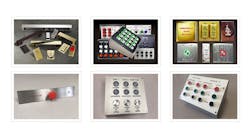A few readers have posed questions to me about door locking and door release as they pertain to their interconnection with a fire alarm system. As you will see, there are clear interpretations of these door locking rules; however, the code language sometimes causes confusion.
As the paid professional, make sure you are knowledgeable about the rules before your installations and acceptance tests, and be ready to point out the codes which supports your position so your customers can open their buildings in a timely fashion.
Q. We have three residential unit buildings operating off of a single fire alarm control panel (FACP) using addressable notification. The state fire marshal unplugged the transformer to the door lock power supply in each building and said that it did not function correctly because the doors didn’t unlock. What am I missing?
You didn’t miss anything. The International Building Code and LSC require doors to unlock upon loss of AC power to the FACP — not the loss of AC power to the ACP (access control panel). The power supply used for the door’s magnetic locks is allowed to keep the doors secured if only the access control panel loses its AC power.
Since your FACP is in an adjacent building, and did not lose its AC power, the batteries were correctly used to keep its building secured. Should the FACP lose its primary power, it must send a signal to each of the ACPs, causing them to instantly unlock any magnetically locked doors.
NFPA 72 rules now allow this unlocking to be delayed if you supply enough FACP standby power to outlast the standby power keeping the doors locked. The Annex of NFPA 72 at A.21.9.3 explains it like this: A problem could exist when batteries are used as a secondary power source if a fire alarm control unit having 24 hours of standby operating power were to lose primary power and be operated for more than 24 hours from the secondary power source (batteries). It is possible that sufficient voltage would be available to keep the doors locked, but not enough voltage would be available to operate the fire alarm control unit to release the locks.
Q. The term “door unlocking” is confusing. I had one new fire inspector test a magnetic door unlocking by going outside and letting the door close behind him. He had to knock to get back in and stated the door obviously wasn’t unlocked! I made the door usable by unlocking it from the inside, but the latch kept it closed when he tried to get back in.
It can be embarrassing to have to explain the code to those that have been charged with its enforcement. Sometimes they may listen to you and read the code section you offer up, and sometimes they may insist on repeating their initial position. Then, depending on how much they have dug their heels in, the farther up the chain of command you may have to go to get it straightened out.
While any effort on your part to state your position may get you the old “I’m not here to argue with you” rebuff, you will have to stick with it or your client may see himself as having to pay for your mistakes — which wouldn’t be true, but that’s now how they would see it.
The correct NFPA 72 passage to refer to is found at section 21.9.1 where it states that electrically locked exit doors “shall unlock in the direction of egress” (along the exit path leaving the building). If the Fire Department wishes to be able to enter the building, suggest installing a Knox Box.
Q. The state fire marshal told us we need to have smoke detectors within five feet of hallway doors dividing two smoke compartments in a newly constructed nursing home in order to allow the hallway doors to swing shut when smoke is detected. We already have the hallways covered with spot-type detectors since serve several patient rooms also open to these hallways. Where are the rules for this situation?
The International Building Code and LSC require the hallways which patients and staff use to exit the building to be protected with smoke detectors. These code rules are specific indicating which areas are allowed to be “open to the hallway” and omits rooms and spaces closed off from the hallway with doors. For example, if the hallway happens to have alcoves or spaces used for a nurse’s station, a small visitor waiting area, or even a niche used for cart storage, then it only makes sense that these areas are to be protected with smoke detectors since they are part of the exit hallway.
This hallway smoke detector rule is found in the building and fire code’s Fire Alarm and Detection section for occupancy type I-2. As an alternate, the two exceptions that follow the hallway rule allow a nurse call system to be installed as a substitute — which includes a hallway-side light located at each patient room, which illuminates and also annunciates at the nurses’ station via the fire alarm system as a supervisory alarm. The remaining exception allows a combination hydraulic door holder with a built-in smoke detector to be used on the patient room doors.
The least expensive and easiest method toward compliance would be to install the hallway smokes. You will also find that when this method is chosen, you are able to omit installing additional, dedicated, smoke detectors to release the hallway smoke doors when the hallway smoke detectors alarm and also perform the hall smoke door release function. Just to be fair, the same hydraulic door closer/smoke detector unit allowed for the patient rooms may also be used in place of any smoke detectors dedicated to releasing hallway smoke doors.
Greg Kessinger is SD&I’s fire alarm and codes expert and a regular contributor. Email him your fire & life safety questions at [email protected].


